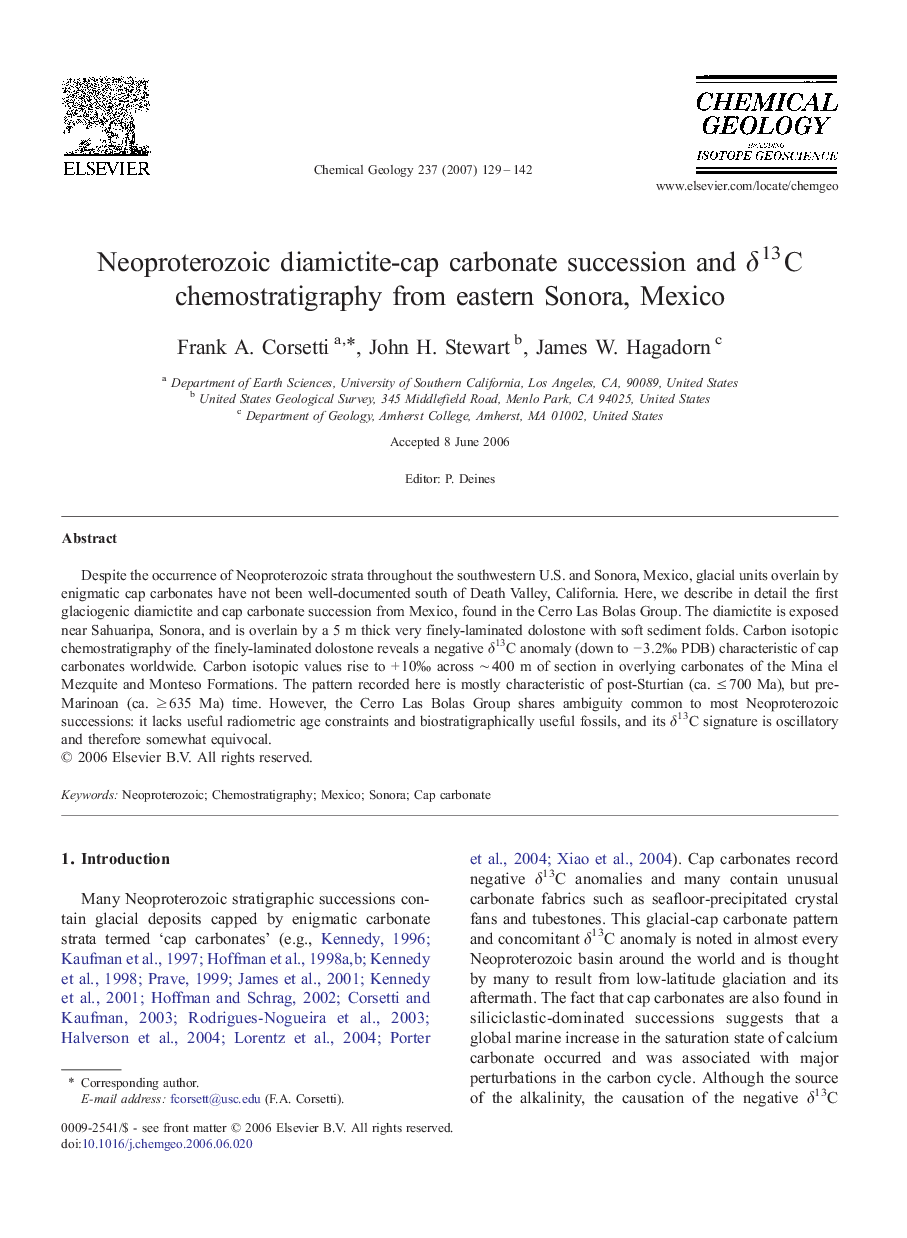| Article ID | Journal | Published Year | Pages | File Type |
|---|---|---|---|---|
| 4701107 | Chemical Geology | 2007 | 14 Pages |
Abstract
Despite the occurrence of Neoproterozoic strata throughout the southwestern U.S. and Sonora, Mexico, glacial units overlain by enigmatic cap carbonates have not been well-documented south of Death Valley, California. Here, we describe in detail the first glaciogenic diamictite and cap carbonate succession from Mexico, found in the Cerro Las Bolas Group. The diamictite is exposed near Sahuaripa, Sonora, and is overlain by a 5 m thick very finely-laminated dolostone with soft sediment folds. Carbon isotopic chemostratigraphy of the finely-laminated dolostone reveals a negative δ13C anomaly (down to â 3.2â° PDB) characteristic of cap carbonates worldwide. Carbon isotopic values rise to + 10â° across â¼Â 400 m of section in overlying carbonates of the Mina el Mezquite and Monteso Formations. The pattern recorded here is mostly characteristic of post-Sturtian (ca. â¤Â 700 Ma), but pre-Marinoan (ca. â¥Â 635 Ma) time. However, the Cerro Las Bolas Group shares ambiguity common to most Neoproterozoic successions: it lacks useful radiometric age constraints and biostratigraphically useful fossils, and its δ13C signature is oscillatory and therefore somewhat equivocal.
Related Topics
Physical Sciences and Engineering
Earth and Planetary Sciences
Geochemistry and Petrology
Authors
Frank A. Corsetti, John H. Stewart, James W. Hagadorn,
